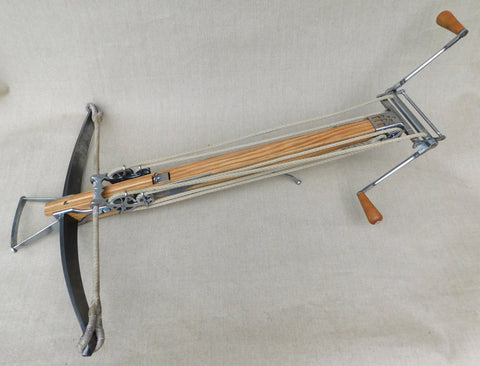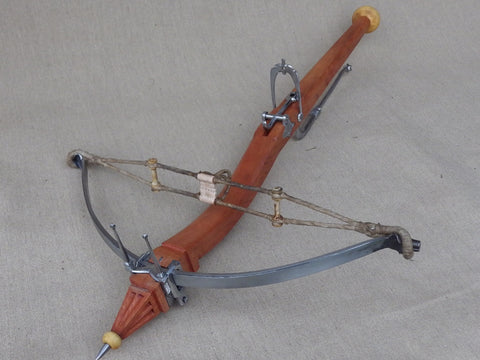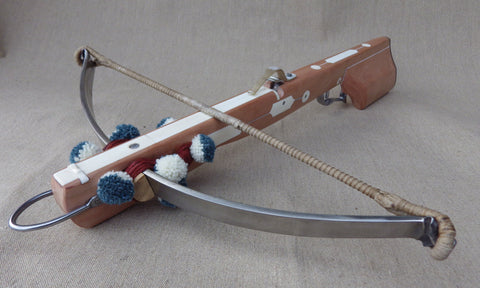A Short History of the Crossbow
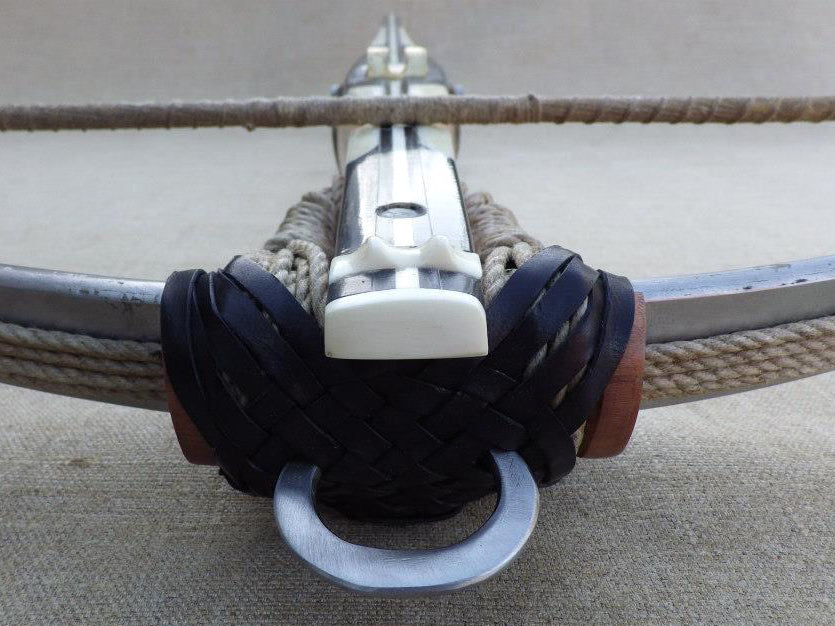
Crossbows came in a great variety of forms; these changed over time and due to their purpose.
What follows is a very concise and general treatise on European bows.
Clearly this device was a predecessor to later torsion Roman artillery such as the ballista and the catapulta.

The Romans took the work of the Greeks and developed it much further to create and standardise their torsion artillery such as the catapulta, as shown by Vegetius and Philon. But later, they had a type of flexion crossbow with a rotating nut trigger called an arcubalista, presumably invented by or adopted by them. There is scant evidence of these, so presumably they were not widely adopted, though there are depictions from Gaul and possibly much later from the North of England.
Little is known of the crossbow in the Dark Ages, but manuscript pictures from around 1000AD show bows strikingly similar to the arcuballista of 700 years before. However as Anna Comnena commented on the 'new weapons' when she first saw them in the late 11thC, we must assume that if they had not disappeared, they were rare.

Around the year 1000, a bow was made that we still have now from Colletière à Charavines. It was very simple and probably for hunting and not for war; but by 1050, the Roda Bible clearly shows a rotating nut crossbow.
There are many advantages to rotating nuts and I believe this was the norm for powerful and war bows.
Italy seems to have taken the weapon on with great enthusiasm and many of the steps forward appear to start there and these start with great rapidity from around 1100. However the second Lateran council of 1139 banned the use of crossbows against any, other than infidels; clearly this interdict had little effect.
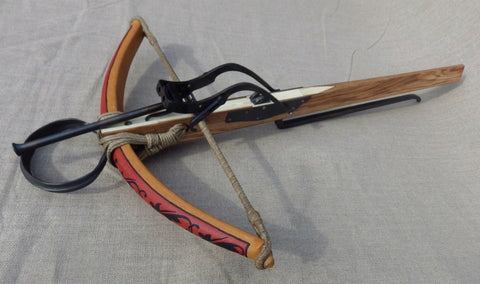
Prior to 1100 bows often had no stirrup and so the user either sat down with a foot either side of the bow and drew it back or they stood and put one foot on one side of the bow and spanned it. Around 1100 the stirrup was invented and this saved the bow itself from wear.
Domestic bows tended to be hand spanned or with belts and these systems lasted through the hey day of the crossbow from 1200 – 1500; military bows invariably used the latest or most suited technology.
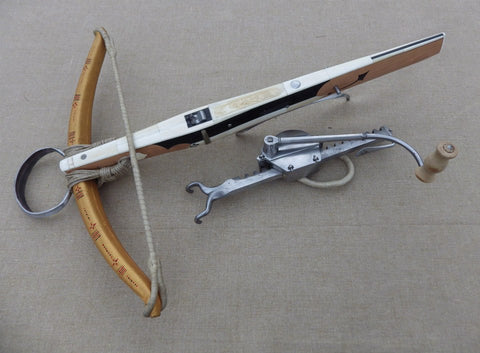
- Military spanning technology
- 1200–1350 spanning belts, later compound/pulley spanning belts
- 1300–1500 goats foot levers
- 1350-1550 windlass
- 1400-1550 cranequin
The cranequin seemed to not really catch on militarily in England, but was popular across much of Europe, though the windlass was popular everywhere. After the advent of the gun, the windlass seemed to have stayed on for target bows and the cranequin was retained for hunting bows.
For military crossbows, the bow itself was initially yew though during the second half of the 1200's composite technology became very popular in Europe possibly brought in from the East , however yew was retained in England.
Around 1350-75 steel bows were introduced and though they are less efficient than wood or composite bows they were more resilient and reliable and so had a following though notably many companies retained composite technology. Composite bows require more care, but offer a faster cast and so they became the bow of choice for hunting bows.
The simple, single axel rotating nut trigger system stayed in use from the late Roman period through into the 16thC when more complicated trigger systems started to come in. Primarily because the rotating nut system does not lend itself to very high poundages. This meant the start of the 16thC was a time of both experimentation with and development of triggers.
Around the same time new spanning methods for lighter weight sporting and pleasure bows came in with the advent of various lever action bows such as the latchet.
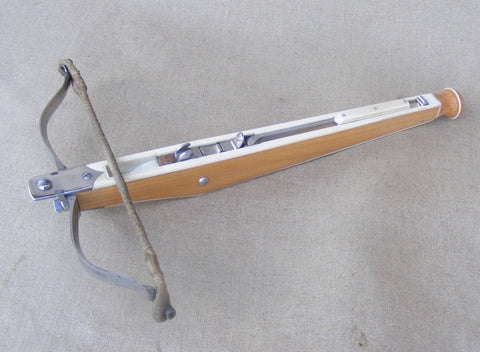
In the late 14thC pellet or stone bows started to be developed in Europe, though they may have come from China and these shoot lead or clay shot and were fun and relatively safe to use and useful for small game and birds. More importantly for those with little money, they were cheap to run as ammunition loss was not a problem.
They became very fashionable in England in the early 16thC and possibly very powerful as Elizabeth I is shown shooting one at a stag (I wonder…) and these carried on through the 17thC being very popular, particularly in Germany as a lever action variant called a kugelschnapper.

As guns came in, the position of crossbows as a military weapon started to wane and so they moved toward the very stylised hunting bows of the late 15thC and 16thC and became largely objects of pleasure and wealth flaunting and as a side the balestrino was born, an ornate miniaturised usually all metal bow with presumably the only purpose being to play about with.
This role as a hunting weapon and a wealth flaunter meant that a great deal of development of the trigger system as well the bows themselves was undertaken and by the 17th and 18thC the schnepper crossbow evolved.
Also in Tod's Blog
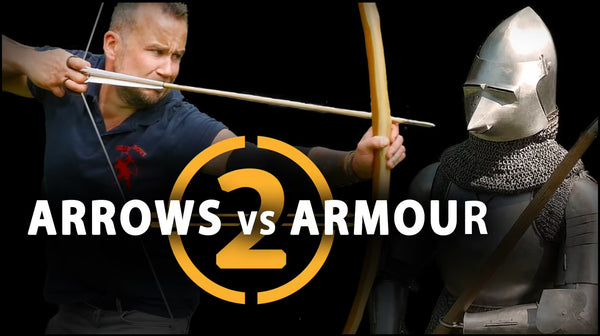
Arrows vs Armour 2 - The second set of Mythbusting films. SEE US LIVE AT CHALKE VALLEY HISTORY FESTIVAL, UK- 1ST JULY 10.30AM

Netflix 'The Witcher' Series 3, NOW OUT Thursday 29th June 2023
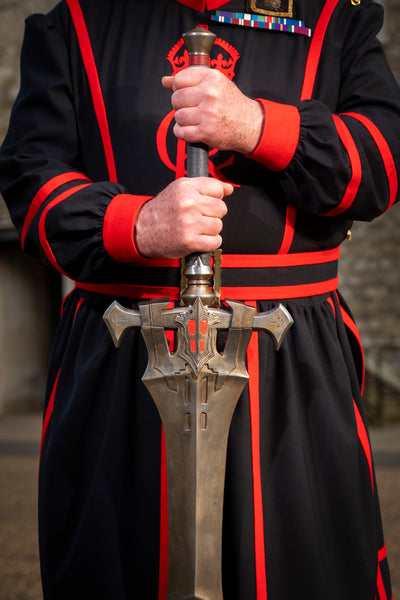
FINAL FANTASY XVI - TOD MAKES INVICTUS SWORD
The Final Fantasy series XVI, Clive Rosfield's Sword, INVICTUS made by Tods Workshop/Tod Todeschini. Its in the Tower of London from 22nd !




